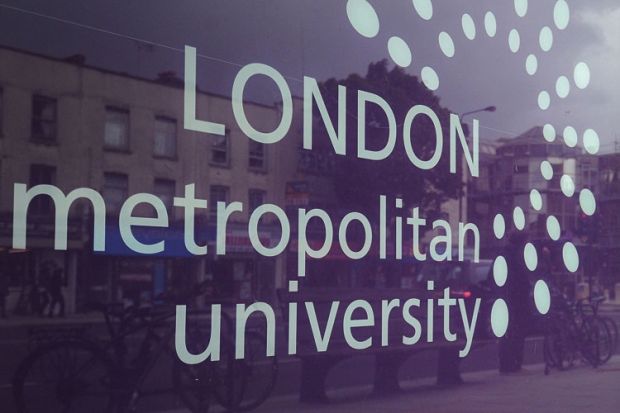London Metropolitan University is set to make up to 10 per cent of its workforce redundant after student numbers fell substantially for a second consecutive year.
It has started a consultation with staff on cutting up to 165 posts in response to a 20 per cent drop in students over the past 18 months.
Overall, student numbers are down 14 per cent on last year after an 11 per cent dip in 2013-14, according to an email sent by John Raftery, the vice-chancellor, on 12 March, in which he says he wants to be “transparent and honest” about the university’s situation.
“There will be the option of voluntary severance, but compulsory redundancies will have to follow if we do not meet our savings target,” said Professor Raftery, who took charge at London Met in August.
The proposed job cuts are likely to surprise many staff as the institution appeared to have stabilised its finances after major restructuring and cost-cutting under Malcolm Gillies’ four-year tenure as vice-chancellor – a term that ended with Professor Gillies leaving with a £159,000 payment in lieu of notice.
“We are shocked by the scale and unprecedented nature of these proposed redundancies,” said Cliff Snaith, secretary of London Met’s University and College Union branch, adding that they were “unjustified”.
“If these redundancies go ahead, it could be destructive to the university,” he said.
In his email to staff, Professor Raftery says that he is keen to bring London Met into line with comparable post-92 universities after a report showed that “the university’s cost structure is too high for an institution of its size and income”.
“Our competitors are doing similar work with similar students but at a much lower cost and getting better student satisfaction scores than us,” he told Times Higher Education.
Professor Raftery says in his email that the 17 per cent dropout rate of students in their first year at London Met was another reason that the institution needed to improve.
Professor Raftery declined to tell THE which departments would face the most redundancies, but admitted that the growth of private providers was “making inroads” into the take-up of business courses. However, law courses, which also faced competition from private providers, were doing well, he said.
Professor Raftery said that he would “improve or remove the areas where quality was not right” and that he remained focused on improving London Met’s score in the National Student Survey, which was 76 per cent last year, 10 percentage points lower than the 86 per cent national average. “That gap is too big,” he said.
The satisfaction scores in excess of 90 per cent achieved by the university’s marketing, politics and pharmacology courses showed that it could do well, but “we need to extend that quality” to the rest of the institution, said Professor Raftery.
London Met needed to produce “compelling evidence that it is providing quality [courses]” if it wished to win more students, he added.
The additional 10,000 hours of peer support provided by third-year students, its high levels of student contact hours and the doubling of staff accredited by the Higher Education Academy in two years were some of the recent initiatives that would help to improve quality, he added.





